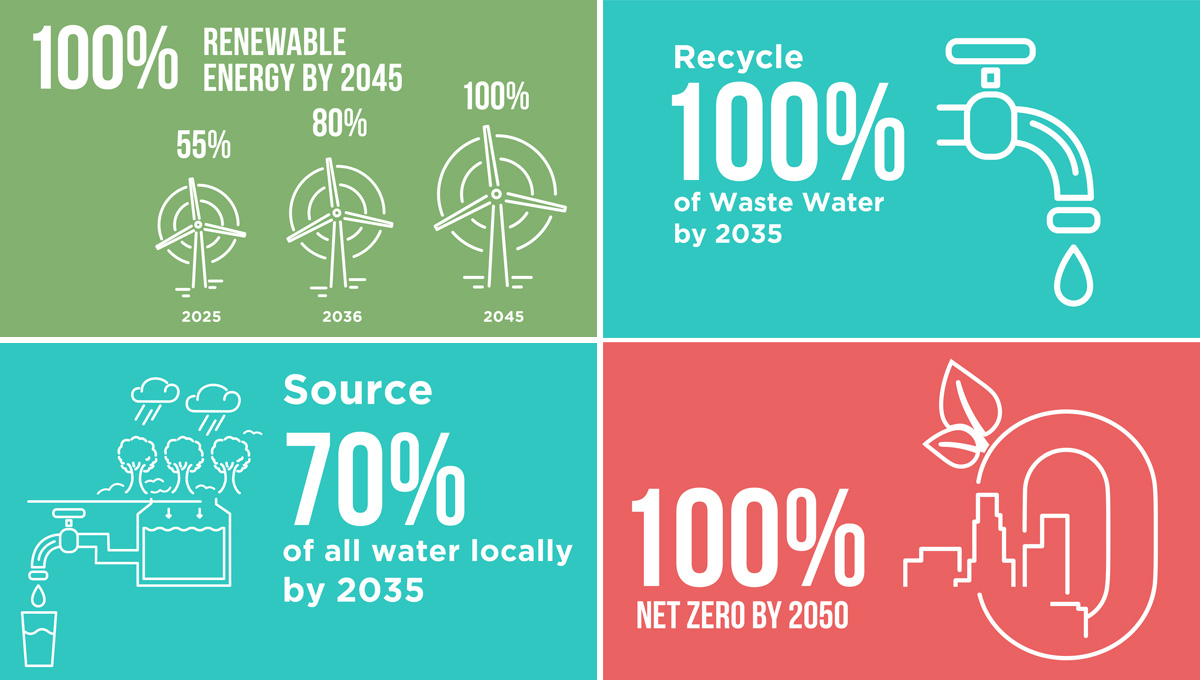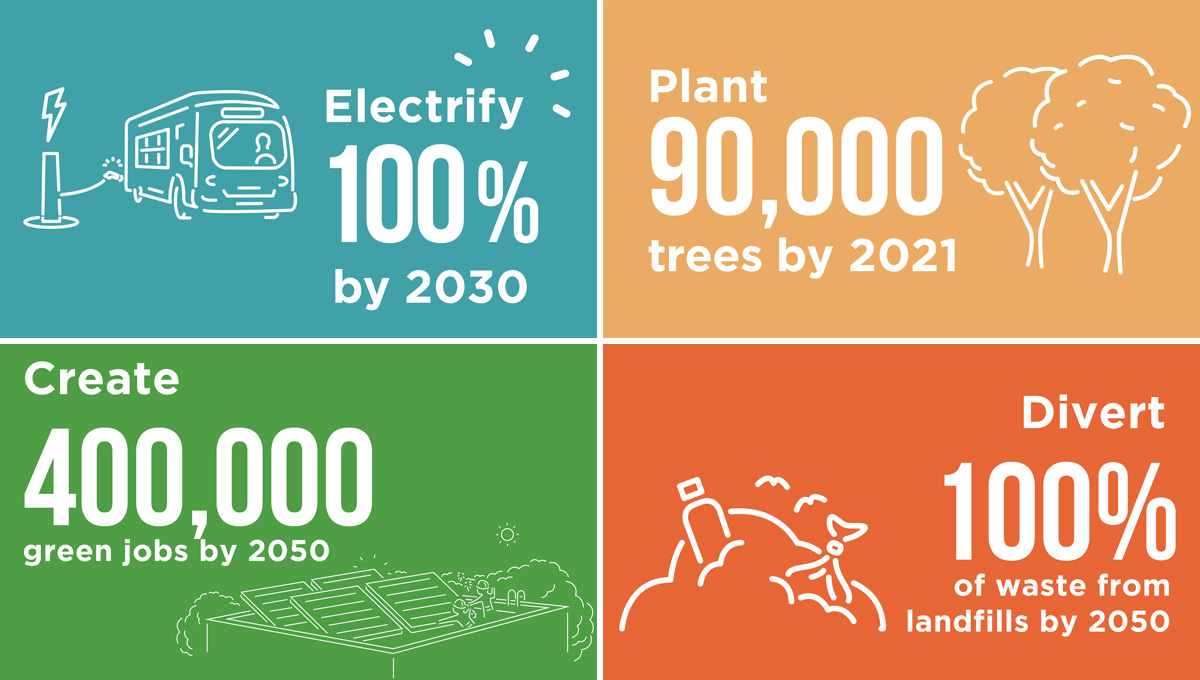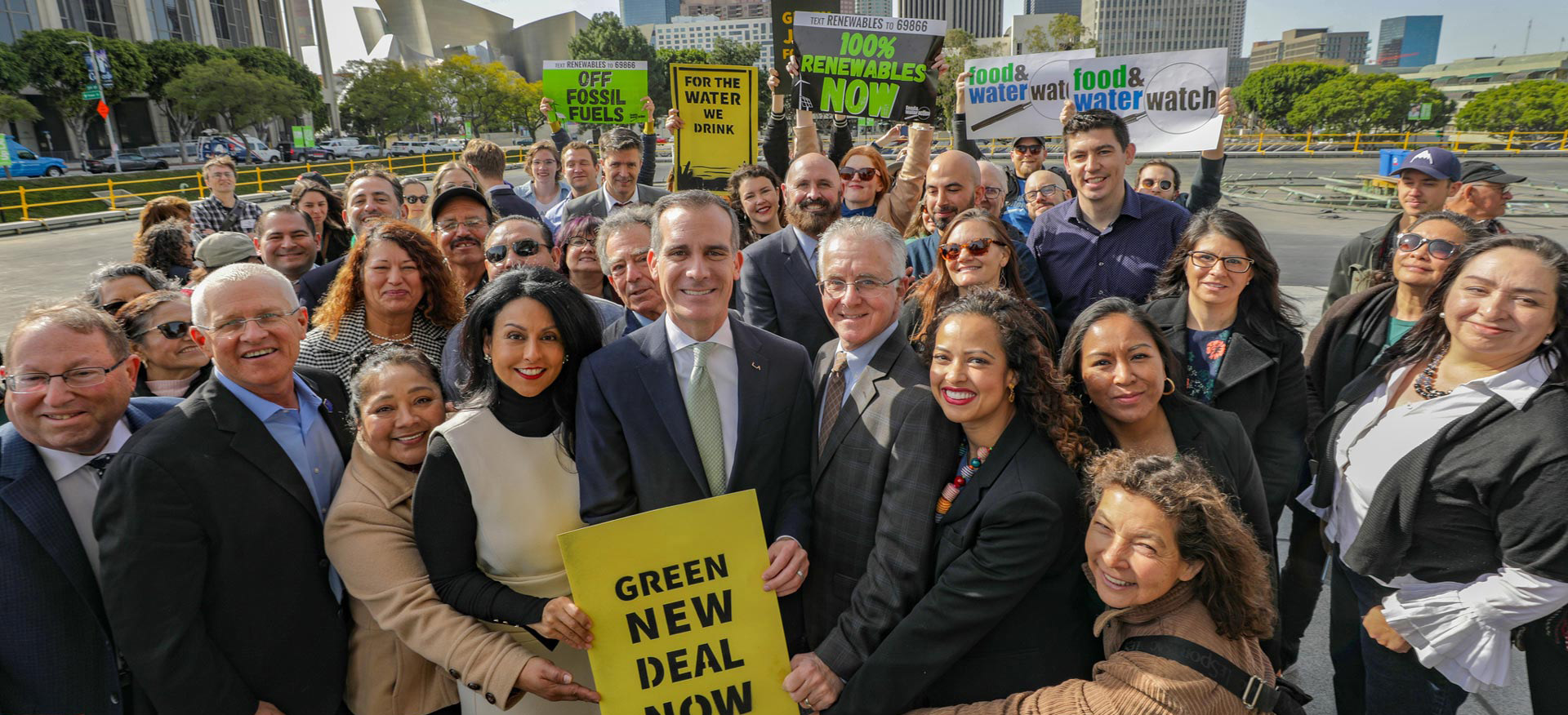Context and Background
L.A. has been a car-centric city for decades but has been making efforts to reduce greenhouse gas (GHG) emissions and has reached a goal of reducing greenhouse gas emissions 25% below 1990 levels. Threats including flooding, heat waves and wildfires have accelerated the city’s mitigation efforts, and they have embraced an ambitious plan to get 50% below 1990 levels by 2025.
In 2015, L.A. released the Sustainable City pLAn – a roadmap to protect environment health and fuel economic growth in an equitable manner. The 2019 version of L.A.’s sustainability plan expands on the previous plan and is pitched as L.A.’s Green New Deal—building off of the national Green New Deal, a framework that has gained momentum for its emphasis on addressing climate change and inequality together.
Design and Program
The largest producers of GHGs in L.A. are energy use in buildings, industries, transportation and waste management. The plan enlists a wide variety of mitigation strategies to achieve their goals. A few are discussed below.
Environmental Justice: Low-income families and communities of color are disproportionately affected by pollution and related poor health outcomes. Bus fleet electrification, reduced emissions from port activities, and reduced production and consumption of oil are goals formulated to improve well-being in the most affected areas. The plan also includes cost of living reduction goals by decreasing energy-burden through efficient buildings and addressing access to food while creating wealth through green jobs.
Performance measures to track progress towards the goals include health indicators (hospital admissions, premature deaths) and a change in the CalEnviroScreen indicators (a statewide tool used to identify pollution burdens and vulnerable populations).
Housing and Development: This strategy strives to preserve and create more affordable housing, reduce homelessness and encourage all new construction to be near transit. The benefits to residents are an estimated 325,000 construction jobs and reduction in transportation costs. The city will track the number of income-restricted affordable units created or preserved, percent of new housing units built within 1,5000 feet of transit and a cumulative increase in new housing units constructed.
 source: Green New Deal pLAn
source: Green New Deal pLAn
Waste & Resource Recovery: L.A. strives to achieve zero waste with a 90% landfill diversion rate by 2025. Implementation measures will include recycling, composting, and recovery of edible food to alleviate hunger. The generated waste will be used as an economic catalyst and will create green jobs.
Performance measures include landfill diversion rates, reduction in municipal solid waste generation, and increased production of reused and repurposed products. The strategy is expected to create 1,700 jobs by 2021 and indirectly supports twice as many jobs.
Prosperity & Green Jobs: Several of the climate mitigation strategies involve deployment of new green infrastructure and technologies. The plan estimates 400,000 green jobs will be created by 2050, and with L.A. minimum wage set to be $15 by 2020, will likely provide living wage for many, though a rising cost of living remains a challenge in L.A. The city will partner with the private sector with a goal of $2 billion in green investment.
 source: Green New Deal pLAn
source: Green New Deal pLAn
Financing
A few identified funding sources in the plan are:
Infrastructure funds – The city has committed to $8 billion in upgrades to the electric grid by 2020 and a $860 million per year investment to expand the transportation system through bonds.
Private Investment – Investment in cleantech investment has fueled economic activity of $379 million with more expected in the future.
Grants – The city works with community groups to secure grants from Transformative Climate Communities, a statewide program that uses cap-and-trade dollars to reduce GHGs in disadvantaged communities while achieving other community-identified goals.
Outcomes/Impact
L.A. has been tracking their progress since the 2015 release of the sustainability plan and published an annual update in 2018.
- L.A. has reduced its GHG emissions by 25% below 1990 values
- 28,500 green jobs have been created since 2013
- $379 million investment in Cleantech investment
- 291 MW of solar installed
- 1,800 publicly available EV charging stations installed





